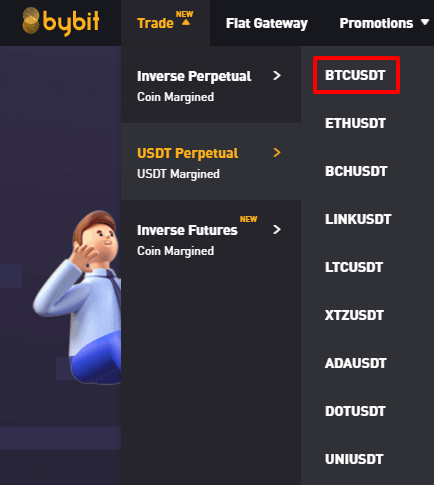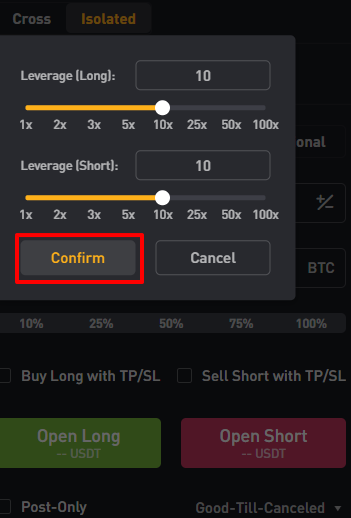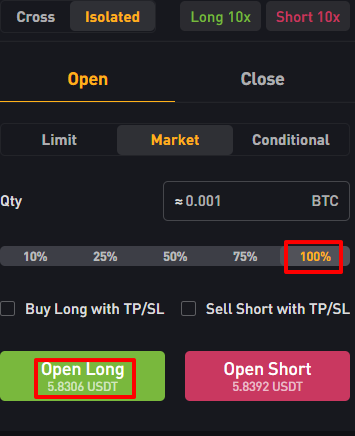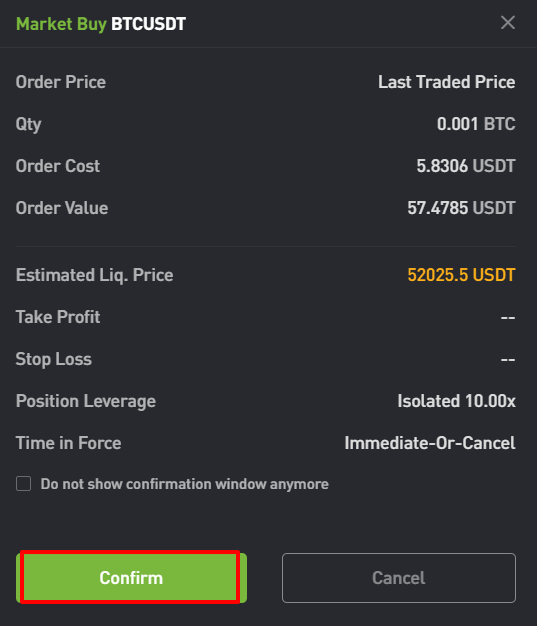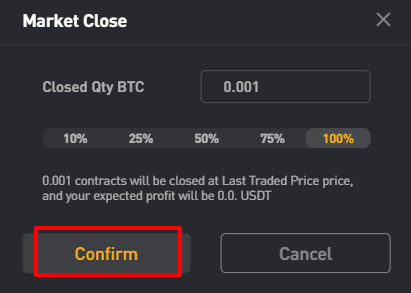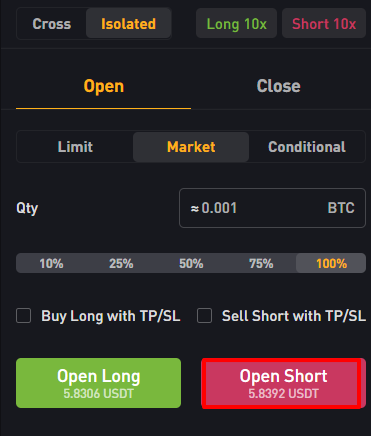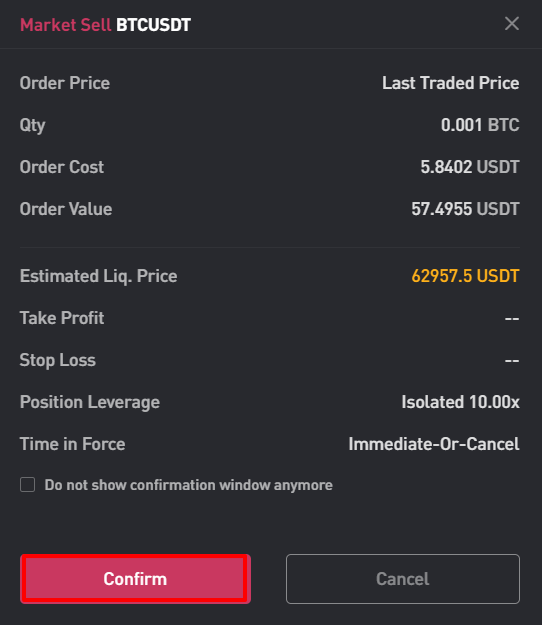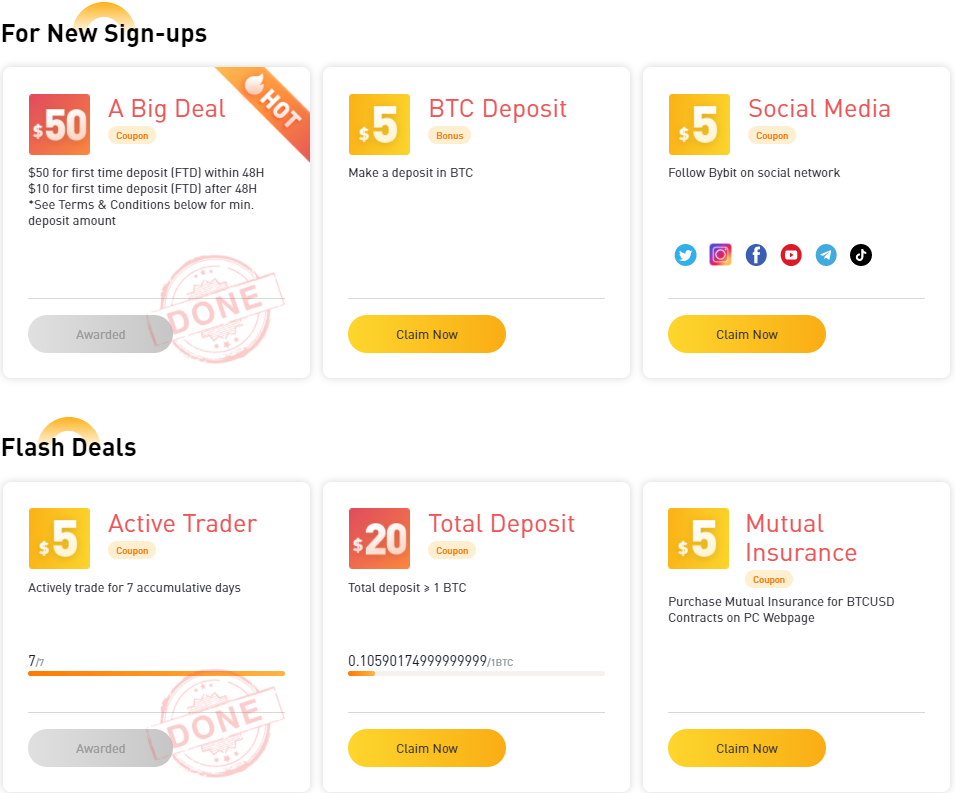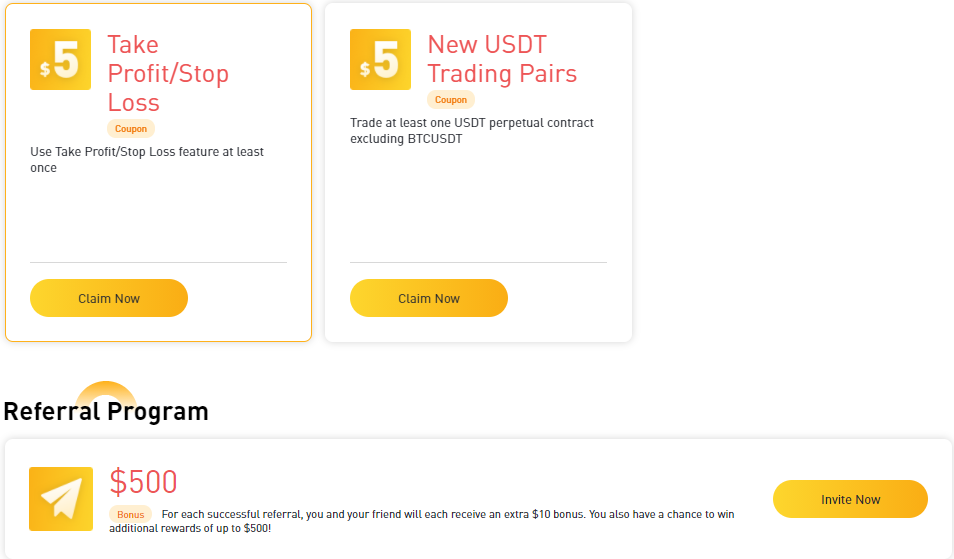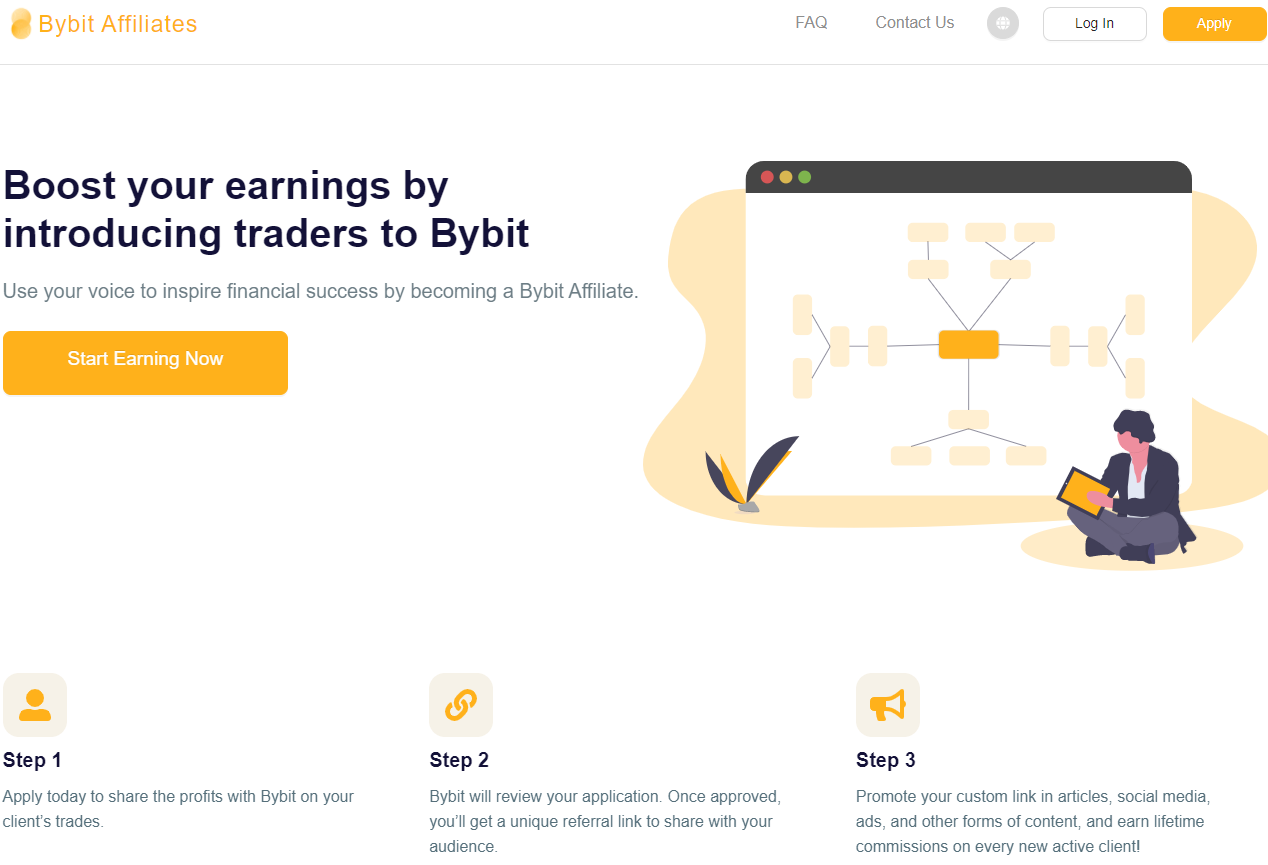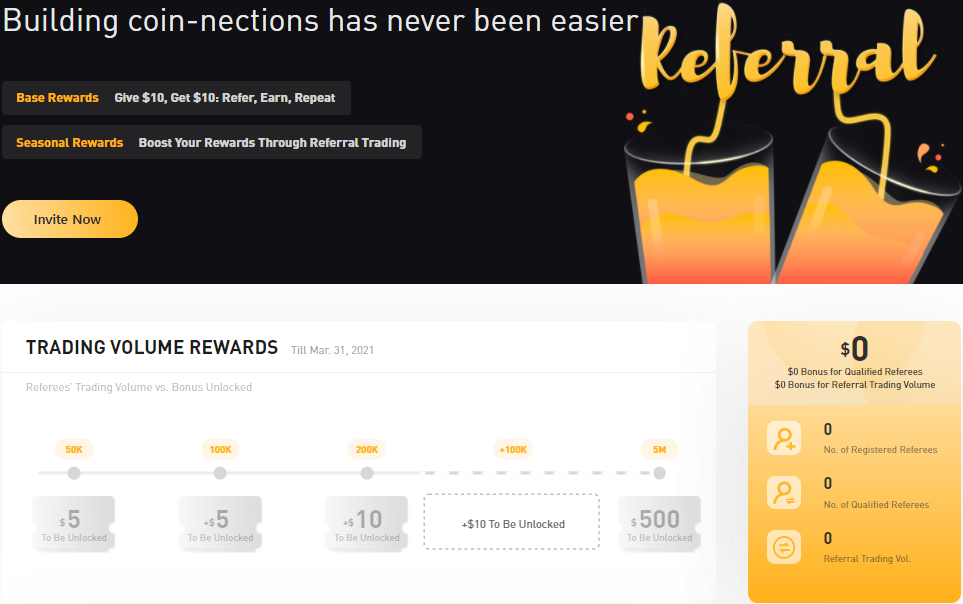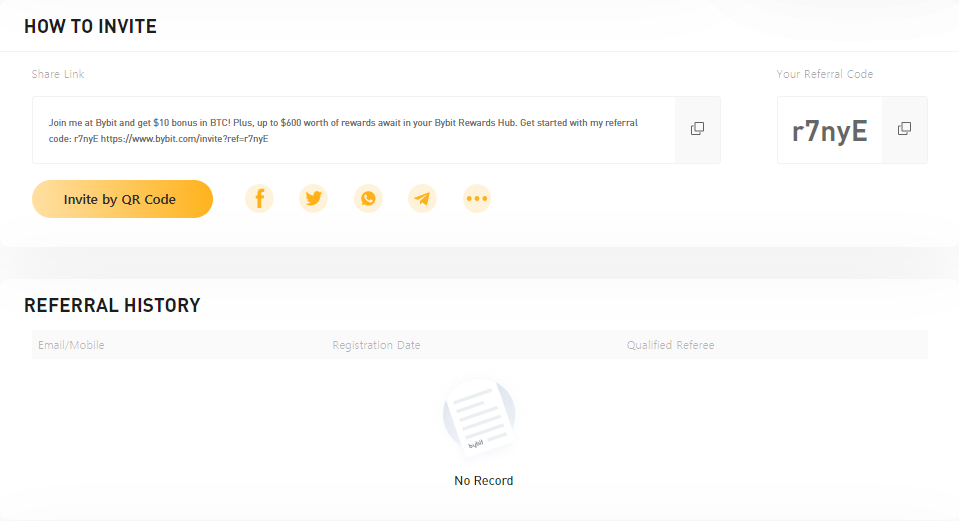| 2021년 해외코인거래소 순위 및 추천 | |||
 |
 |
 |
|
| 거래량 | 11조 | 3.5조 | 9.5조 |
|---|---|---|---|
| 언어 | 영어 | ★한국어지원 |
영어 |
| 수수료 | - 지정가 : 0.02% - 시장가 : 0.04%(1위) |
- 지정가 : 0.02% - 시장가 : 0.03% |
- 지정가 : -0.025% - 시장가 : 0.075% |
| 분야 | 현물(1위) |
현물+선물 (강추!) |
선물(1위) |
| 회원가입 | 회원가입 | 회원가입 | 회원가입 |
| 할인코드 | 20% 할인 | 50% 할인 | 20% 할인 |
Bybit New Zealand Review 2021
Leverage Futures Trading,Bonus,Fee and Testnet
Brief Intro to Bybit
- Bybit exchange is a futures exchange that attract lot of crypto traders.
- It is a cryptocurrency margin/futures exchange, and has a great advantage. Traders can both long and short various types of coins together with leverage.
- It has been operating for 3 years until 2021. It is a safe exchange with no hacking cases so far!
- The website and the app is also easy to use, and provide customer service 24/7.
- It offers execution speed of 100,000 TPS (transaction execution per second). for trading. This is a one of the fastest speed in the industry.
-I t also provide various functions such as margin, insurance and easy purchase of cryptocurrency by credit cards!
How to trade futures in Bybit?
There are two types of cryptocurrency futures products to know!
1. Inverse Perpetual Contract.
-Inverse perpetual contract is a product that trades USD with coins as collateral. When the market grow up, you can get more profits instead of just holding coins.
-Conversely, if the market declines, you need to place a 1x short order to preserve the value of USD against coins.
2. USDT Perpetual Contract.
-USDT perpetual contract is a product that trades coins by USDT as collateral. Trading coins by stable coins. You have to buy a specific coin to get profit when it rises.
-Conversely, if the market falls, you can enjoy the effect of increasing the number of coins by holding a tether.
It may be similar, but these two are totally different.
Now, we will show you how to sell short in an USDT Perpetual contract.
1. Select the products and coins that you want to trade!
-Click "Trade" tab on the upper left and the menu will show up!
-Please choose an inverse contract or USDT contract!
-Then, you can choose the cryptocurrency you want to do margin trading.
-Click the coin to enter transaction screen!
2. Adjust Margin Mode and leverage !
-There are two margin mode, one is largely crossover and the other is isolation margin !
-Cross (CROSS) can increase the gap between the liquidation price and the entry price by securing the balance other than the amount of investment. This lowers the chances of being liquidated, but if liquidated nonetheless, the entire amount will be evaporated.
-ISOLATED evaporates only the invested investment when forced liquidation occurs. And the remaining balance can be preserved. Although the probability of forced liquidation is relatively higher than that of cross-margin mode, it has the effect of managing risk so that only limited funds can lose money!
3. Choose the method your order!
- Choose an ordering method of limit / market / conditional!
-Limit price is an order method that enters the price you specify.
-Market price is an order method that immediately enters the current price.
-Major sub-order is an order method in which a transaction is concluded when the activation price is reached.
-If you finish setting the order method, margin, and leverage, you can select the investment ratio!
-You can directly enter the quantity or select the percentage you want to click such as 10%/25%/50%/75%/100%!
-Next is the investment direction! Click the green button for short buying (upper) and the red button for short selling (bottom)! In this example, I'll show you short selling!
-If you click the open long button, a confirmation window will show up as below!
-We recommend you check below details and confirm your order!
4. Wait for liquidation after entering the position!
-If you click OK, you can see that you have entered the lower betting position as below!
-For a quick and simple way to close a position after entering a position, use the'Limited Price' and'Market Price' buttons on the right!
-For market price liquidation, you can choose how much to liquidate at the present price right now!
-Conversely, if you click the Open Short button, a confirmation window will show up as below!
-We recommend that you check below details and confirm your order!
-You can check the transaction record at close P&L as below.
Promotions in Bybit Exchange!
Bybit has 4 major promotions that are currently going on!

1. Lastest Promotion
- Let's first check the latest promotions! They have a $250,000 giveaway event that is going onwhich everyone can participate!
- As you can see there are many events going on in a monthly basis.This reflects how much the exchanges care about the community and the users.
2. Rewards Hub
- The next section to check is the reward hub. In reward hub, there are easy and simple quests to complete and acquire rewards.
- As you can see I have already got multiple rewards by simply deposit and trading!
3. Affiliate Program
- Bybit also has a generous reward in terms of bybit affiliates.
- For those who has own blog or website can apply for partnership and earn some rebates for inviting users in behalf of bybit!
4. Referral Program
- Lastly, Bybit also has a general referral program where you can invite your friends and family to get some reward for invitation :)
- You can get at most $500 for inviting friends !
Fee Policies in Bybit Exchange
1. Trading Fee-A futures contract is a derivative financial product that follows a price index instead of trading cryptocurrency directly. It can decrease trading costs and use leverage based on margin to make short-term buying and selling.
-Bybit's commission is 0.075% for market orders and -0.025% for limit orders. A limit order fee” -0.025%” means that you get paid, instead of paying. Conversely, market orders will charge 0.075% that you have to pay.
-In the Bybit Futures Exchange, there are Inverse Contracts and USDT Contracts. Bitcoin (BTC), Ethereum (ETH), EOS (EOS) Ripple (XRP) are baskets of cryptos to trade for inverse contracts.- Bitcoin (BTC), Ethereum (ETH), Bitcoin Cash (BCH), Link (LINK), Litecoin (LTC) and Tezos (XTZ) offered for USDT contracts.
2. Deposit and Withdrawl Fee
-ByBit supports Bitcoin (BTC), Ethereum (ETH), EOS (EOS), Ripple (XRP), and Tether (USDT) to deposit and withdraw.
-There are no additional fee levied except for network fees of each coins.
-Network fee might go up and down time to time and the best and quick way to deposit and withdraw is using Ripple.
- If you cannot accept the fluctuation of Ripple, you can deposit and withdraw by USDT. However, it may cost more network fee.
3.Funding Fee
- Funding fee can reduce the gap between the price of spot and futures.
- Bybit also pays or receives funding fees every 8 hours.
- According to the price gap, funding fee will fluctuate by each coin.
How to Use Testnet of Bybit?
1. Create An Account for Testnet
- Bybit provides them a testnet for mock investment. It will be the best way to learn more than millions of investment strategies and practice how to invest.
- Enter your email and password to create an account. You can choose to fill in the invitation code or leave it blank.
- And then, continue to filling in all the blank space and agree all terms and conditions, and click”Register” button.
2. Please confirm Email Verfication
- You will see the email verification after you click “register”.
- You will found the 6-digit code in your email sent by Bybit.
- Enter your email code and you done the registered for the testnet!
3. Request for USDT from Customer Service!
- This is a chat window where you can directly contact with the Bybit agent. Enter the topic for request and your email address. Phone number is an option.
- Requested USDT took only few minutes to get the test money!
- We have got 3000 USDT for testnet! Hoooorayyyy!
How crypto is taxed in The New Zealand?
New Zealand's Inland Revenue on September 7, 2020, announced the release of updated guidance on the tax treatment of crypto-assets in New Zealand, including virtual currencies. The guidance explains that cryptoassets are treated as property for tax purposes because New Zealand does not have a broad capital gains tax. Instead, taxes on capital gains are payable only if gains are generated from assets held on revenue account. There are no special tax rules for cryptoassets but income derived from selling, trading, or exchanging them is taxable.
The guidance for and individuals, sets out the rules for selling, trading, swapping, lending or mining cryptoassets. It sets out the records that must be kept, how to calculate New Zealand dollar values for crypto-assets, rules regarding calculating income and expenses, and tax filing requirements. An IR3 is a statement of how much income you have earned over the tax year (1 April to 31 March). It includes money earned from a range of sources, like salary and wages, overseas income, superannuation, investments and rental income.
Crypto-asset tax for individuals
New Zealand tax residents who buy, sell, trade, exchange, or mine crypto-assets must pay income tax. Non-resident taxpayers are subject to New Zealand tax if their crypto-asset income has a source in New Zealand.
Income tax
New Zealand’s personal income tax rates depend on your income increases.
The top personal tax rate is 33% (for income over NZ$70,000).
The lowest personal tax rate is 10.5% (for income up to $14,000).
Companies and corporates are taxed at a flat rate of 28%.
GST
GST is a flat rate tax of 15%. It is added to the price of most goods and services when you buy them, including some you buy from overseas suppliers.
There are no specific rules for the income tax or GST treatment of cryptocurrency. Inland Revenue has concluded that under current GST law "the supply of a crypto-asset could be an exempt financial service [ie, an exempt supply for GST purposes], subject to 15% GST, or a zero-rated supply to a non-resident" depending on "the specific facts and features of the crypto-asset and the residency of the buyer and seller". This makes the GST consequences of using or investing in crypto-assets both uncertain and inconsistent.
It’s important to keep good records for all your transactions with cryptoassets in New Zealand. A ‘carrot and stick’ approach to New Zealand’s tax legislation means those who voluntarily disclose gains from trading in cryptocurrencies could avoid stiff penalties – up to 150 percent on the tax owed – as Inland Revenue eyes a tax take that could potentially be worth millions. Essentially, crypto-assets are treated as a form of property for tax purposes. What people make from selling, trading or exchanging crypto-assets is taxable.
Individuals and businesses must also keep accurate and complete crypto-asset records, and must keep these records for at least seven years.

